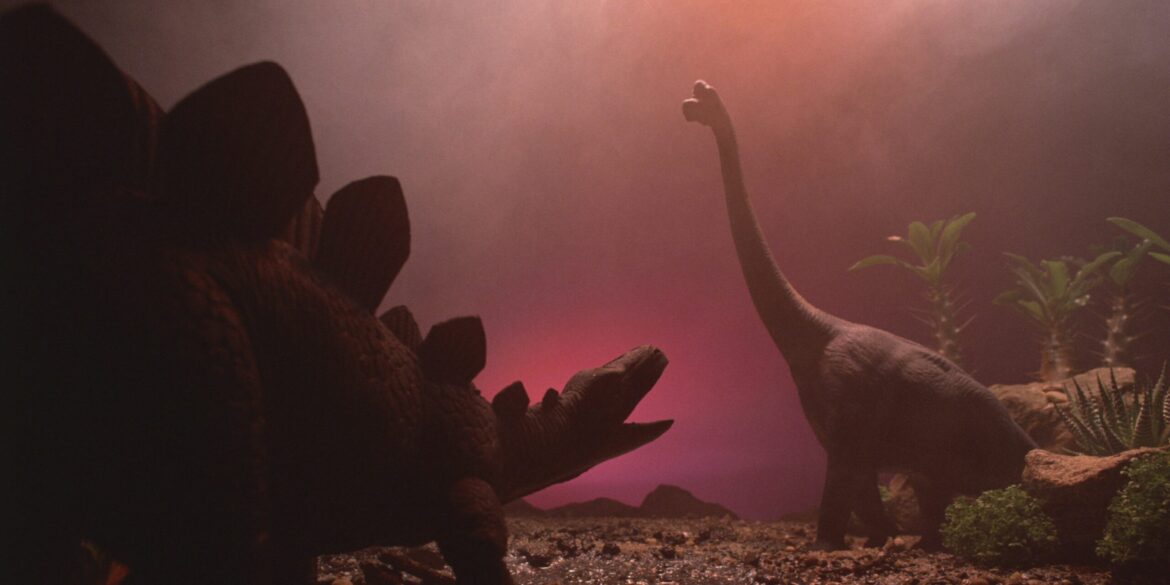Paleontologists at the Freie Universität Berlin have made a major breakthrough in understanding the lives of sauropod dinosaurs, the massive, long-necked herbivores that dominated the Jurassic landscape. Through the study of remarkably well-preserved fossilized teeth, scientists have reconstructed new details about the diets, habitats, and migratory behaviors of these prehistoric giants, offering a more vivid picture of how they thrived more than 150 million years ago.
The discovery centers on teeth recovered from sedimentary deposits dating back to the Late Jurassic period. Using advanced imaging and microscopic techniques, the research team analyzed the enamel surfaces for patterns of wear and microscopic scratches. These details revealed that sauropods were not uniform in their feeding strategies. Instead, they demonstrated a surprising diversity in diets and behaviors, shaped by their environments and possibly by seasonal changes in vegetation. The analysis showed that some species adapted to a wide variety of plant life, while others displayed consistent feeding habits that pointed to more specialized ecological roles.
One of the most important revelations from the study was the evidence for migration. By examining isotopic signatures within the teeth, scientists determined that certain sauropods moved seasonally between distinct feeding grounds. This behavior suggests that these dinosaurs did not simply remain in one habitat but instead traveled long distances, possibly in search of richer vegetation or more favorable climates. Such findings add new dimensions to our understanding of Jurassic ecosystems, indicating that sauropods were dynamic creatures capable of adapting to shifting environments rather than being bound to a single ecological niche.
Read Also: https://goodmorningus.com/nasas-solar-orbiter-reveals-the-suns-hidden-particle-engines/
The implications of the Berlin research extend far beyond diet. Sauropods, which include famous species such as Diplodocus and Camarasaurus, have long fascinated paleontologists for their sheer size and evolutionary success. Yet much about their daily lives has remained speculative due to the limitations of the fossil record. By focusing on teeth—the most durable part of their anatomy—scientists have tapped into a rich source of behavioral information. Each microscopic scratch and wear pattern acts like a diary entry, recording what these animals ate, how they moved, and how they interacted with their surroundings.
The study found marked differences among sauropod groups. Long-tailed forms, such as those related to Diplodocus, displayed enamel wear that suggested a flexible, generalist diet, able to take advantage of whatever plant resources were available. By contrast, Camarasaurus specimens from both Europe and North America showed consistent tooth wear that implied more specialized feeding and potential long-distance seasonal migrations. Meanwhile, sauropods from Tanzania’s Tendaguru beds revealed especially heavy tooth wear, which researchers attribute to the abrasive qualities of vegetation coated in dust and sand, typical of a semi-arid environment. These comparisons reveal how environment and geography shaped sauropod survival strategies.
The researchers also highlighted the importance of technological advances in making such discoveries possible. Dental Microwear Texture Analysis, a method originally developed for studying mammals, was systematically applied to sauropods on a large scale for the first time. High-resolution three-dimensional scans allowed scientists to detect microscopic traces invisible to the naked eye, transforming ancient teeth into powerful tools for reconstructing lost ecosystems.
Beyond the scientific insights, the findings shed light on how sauropods coexisted with other species and how they partitioned ecological niches to minimize competition. The data suggest that even within the same regions, different sauropod groups may have relied on distinct feeding strategies, allowing them to share habitats without exhausting resources. This kind of ecological differentiation may help explain how these enormous animals were able to thrive for millions of years in varied environments across the globe.
The broader significance of the research is that it bridges the gap between bones as static remains and the dynamic lives of the animals they belonged to. By extracting behavioral information from something as small as a tooth, paleontologists are piecing together a richer, more accurate narrative of the Jurassic world. Their work underscores that every fossil, no matter how modest, holds the potential to reshape our understanding of Earth’s history.
For scientists and the public alike, the study represents a leap forward in reconstructing the daily realities of dinosaurs beyond their skeletal frames. It not only highlights the complexity of sauropod ecology but also reinforces the value of interdisciplinary approaches in paleontology, where geology, biology, and cutting-edge technology converge. By illuminating the diets and migrations of these giants, the Berlin team has taken a major step toward unraveling the secrets of one of the most iconic groups of animals to ever walk the planet.

